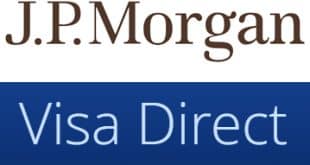The fast-growing buy now, pay later (BNPL) installment-credit option for online and in-store payments could reach $1 trillion in U.S. volume by 2025, or between 10 and 15 times the current level, according to a report released Tuesday by CBInsights, a New York City-based financial-service research firm.
A confluence of several factors account for the rapid rise of this payment alternative and for the emergence of a range of BNPL players, including major incumbent payments providers like PayPal Holdings Inc. and Square Inc. But the business, which allows consumers to opt at checkout to pay for a purchase in equal installments over a short period of time, also must contend with roadblocks.
“With this growth, BNPL players face some formidable obstacles, as incumbent players including card issuers, payment networks, and digital wallets all ramp up efforts to jockey for real estate on merchant checkout pages,” notes the report, “Disrupting the $8T Payment Card Business.”

The popularity of BNPL has grown especially during the pandemic as consumers increasingly turn to e-commerce and seek out ways to stretch strapped budgets. That has led to big jumps in volume for relatively new companies like Affirm Inc. (founded 2012) which went public last month, Afterpay Ltd. (2014), Sezzle Inc. (2016), and Quadpay Inc. (2017), as well as for the more established Klarna Bank AB (2005).
U.S. user counts exploded in 2020, with Klarna reporting a 106% increase to 11 million, Afterpay a 261% jump to 6.5 million, and Affirm a 63% rise to 3.9 million. That kind of growth has attracted investors. Equity funding for the business reached $1.47 billion on 20 deals last year, up from $106 million on five deals in 2016, according to CBInsights.
While banks and card issuers have offered point-of-sale financing for years, the new, non-traditional approach is proving more attractive. The BNPL players “have acquired customers and merchants over the past few years by prioritizing changing customer preferences, flexible financing options, and cheaper fees or interest—areas where traditional banks, credit card issuers, and lenders fall short,” says the report.
BNPL essentially revives the old concept of layaway plans and gives it a modern gloss, with the exception that consumers get to receive the goods immediately, paying for them in equal installments over a relatively short time span.
But the method’s rapid growth is sparking a reaction from long-time networks and processors in the payments business. “Incumbent payment facilitators (including payment networks, gateways, and digital wallets) and card issuers (including banks) see BNPL as a growing threat to existing businesses,” the report notes. “Visa and Mastercard—two of the most dominant payment networks—have both partnered with or acquired companies to grow their BNPL capabilities.”
The big move from Visa in this market came in 2019, with the announcement of installment-payment APIs. The APIs became available early last year. Also in 2019, Mastercard acquired Vyze Inc., a point-of-sale installment lender in Austin, Texas.
But in a sense, as networks, Visa and Mastercard can’t lose as BNPL continues to grow. “For every transaction that BNPL players facilitate, they forfeit a portion of fees to the incumbents for processing and clearing,” the CBInsights report notes.





